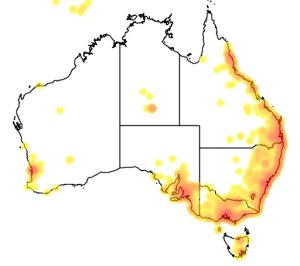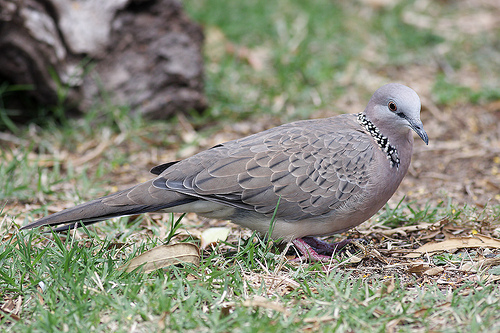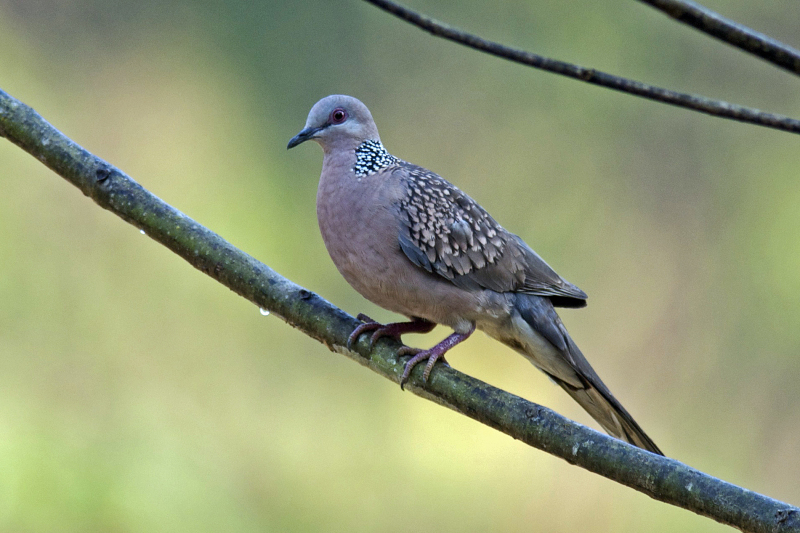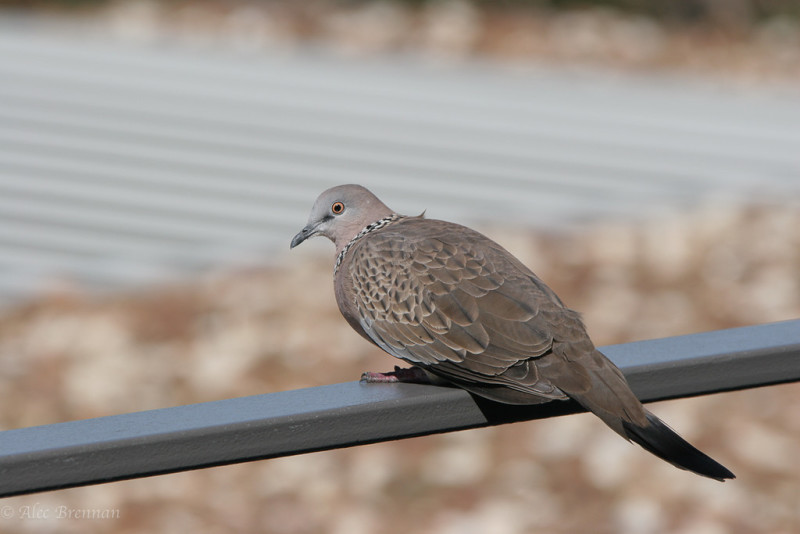Colours
Distinguishing features
The ground colour of this long and slim dove is rosy buff below shading grey on the head and belly. There is a half collar on the back and sides of the neck made of black feathers that bifurcate and have white spots at the two tips. The back has brown feathers with rufous spots in the Indian and Sri Lankan subspecies. The lesser median coverts are grey brown. The Indian and Sri Lankan populations have these coverts with rosy spots at the tip divided by a widening dark grey streak along the shaft. The primary coverts are dark brown. The wing feathers are dark brow with grey edges. The centre of the abdomen and vent are white. The outer tail feathers are tipped in white and become visible when the bird takes off. Sexes are similar, but juveniles are duller than adults and do not acquire the neck spots until they are mature. (Wikipedia)
Size
- From 28 cm to 32 cm (Length of specimen)
Wingspan
- Up to 48 cm
Synonyms
Distribution

©Atlas of Living Australia: Australian distribution: Spotted Dove (Streptopelia (Streptopelia) chinensis)
Distribution and habitat preferences
It is a common resident breeding bird across its native range on the Indian Subcontinent and Southeast Asia. The species has been introduced into many parts of the world and feral populations have become established. (Wikipedia)
Diet
They forage on the ground for grass seeds, grains, fallen fruits and seeds of other plants. They may however take insects occasionally and have been recorded feeding on winged termites. (Wikipedia)


